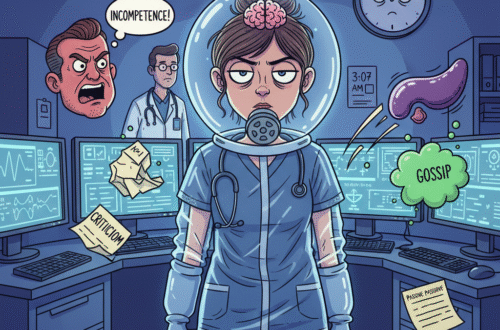The fast-paced, high-demand environment of healthcare leaves little room to breathe—literally. Nurses, doctors, and allied health professionals juggle multiple patients, life-or-death decisions, and endless documentation every single shift. The result? Chronic stress, compassion fatigue, and burnout have become some of the biggest threats to the modern healthcare workforce.
But what if one of the most powerful antidotes to this pressure didn’t involve expensive programs or extra hours off, but something as simple as intentional breathing and mindfulness?
Practicing mindfulness for clinicians has been scientifically proven to reduce stress, improve focus, and build resilience. For nurses and healthcare providers, mindfulness isn’t about sitting cross-legged in meditation for hours—it’s about integrating small, intentional practices into already busy shifts.
What is Mindfulness for Clinicians?
At its core, mindfulness means being fully present and aware in the moment, without judgment. For healthcare professionals, this practice helps shift attention away from worries about future tasks or regrets about past decisions, and instead centers awareness on what’s happening right now.
Examples of mindful practices for nurses and clinicians include:
- Taking three deep breaths before entering a patient’s room
- Noticing and releasing physical tension during charting
- Savoring each sip of water during a quick break
- Pausing intentionally before giving a handoff or answering a page
These simple nurse mindfulness techniques can make a tangible difference in reducing stress and improving patient care.
The Science Behind Mindfulness in Healthcare
Reducing Stress Hormones
Mindfulness has been shown to lower cortisol levels—the body’s main stress hormone. For nurses and physicians, this translates to calmer decision-making, even in high-pressure environments.
Boosting Focus and Concentration
Healthcare demands sharp attention to detail. Mindful breathing and grounding exercises improve cognitive performance, helping reduce medical errors and enhancing patient safety.
Enhancing Emotional Resilience
Burnout is often fueled by repeated exposure to trauma, stress, and fatigue. Practicing mindfulness equips clinicians with stronger coping skills and emotional stability to navigate tough shifts.
Promoting Compassion in Care
Being present improves empathy, listening, and patient relationships. A 2019 study found that healthcare workers who practiced mindfulness reported less emotional exhaustion and higher job satisfaction.
Practical Mindfulness Techniques for Busy Shifts
- Box Breathing (4-4-4-4)
Inhale for 4 seconds, hold for 4, exhale for 4, and pause for 4. Repeat 3 times to reset before entering high-pressure situations. - Grounding with the Senses
Identify 5 things you see, 4 you can touch, 3 sounds, 2 smells, and 1 taste. This quick exercise brings awareness back to the present. - Mindful Walking Between Patients
Instead of rushing, take 10 slow steps, focusing on your breath and body movement. - The Mindful Pause
Before answering a call, responding to a page, or giving a shift report, take one deliberate breath to reset. - Gratitude Reflection at Shift’s End
Write down one positive interaction from your day. Shifting focus from exhaustion to gratitude promotes long-term resilience.
Overcoming Barriers to Mindfulness for Nurses and Clinicians
- “I don’t have time.” Many practices take under 30 seconds—like a single mindful breath.
- “It feels awkward.” Start small; mindfulness is a skill that strengthens with practice.
- “It won’t make a difference.” Studies show that even micro-habits can significantly lower stress over time.
Cultivating a Culture of Mindfulness in Healthcare
- Encourage brief “pause moments” during staff huddles
- Introduce mindfulness exercises in nurse residency programs
- Normalize mindful breathing before codes, reports, or handoffs
- Use workplace wellness apps that support mindfulness practices
By promoting a mindfulness culture in healthcare, leaders can reduce staff burnout, improve teamwork, and increase patient satisfaction.
Final Thoughts
Burnout in healthcare is one of the most pressing issues facing nurses, physicians, and allied health professionals today. But mindfulness offers a practical, evidence-based approach to reducing stress, improving focus, and building resilience.
You don’t need an hour of meditation or a yoga retreat to benefit. All it takes is a pause, a breath, and the intention to be present.
Because ultimately, the best way to care for your patients is to start by caring for yourself.





